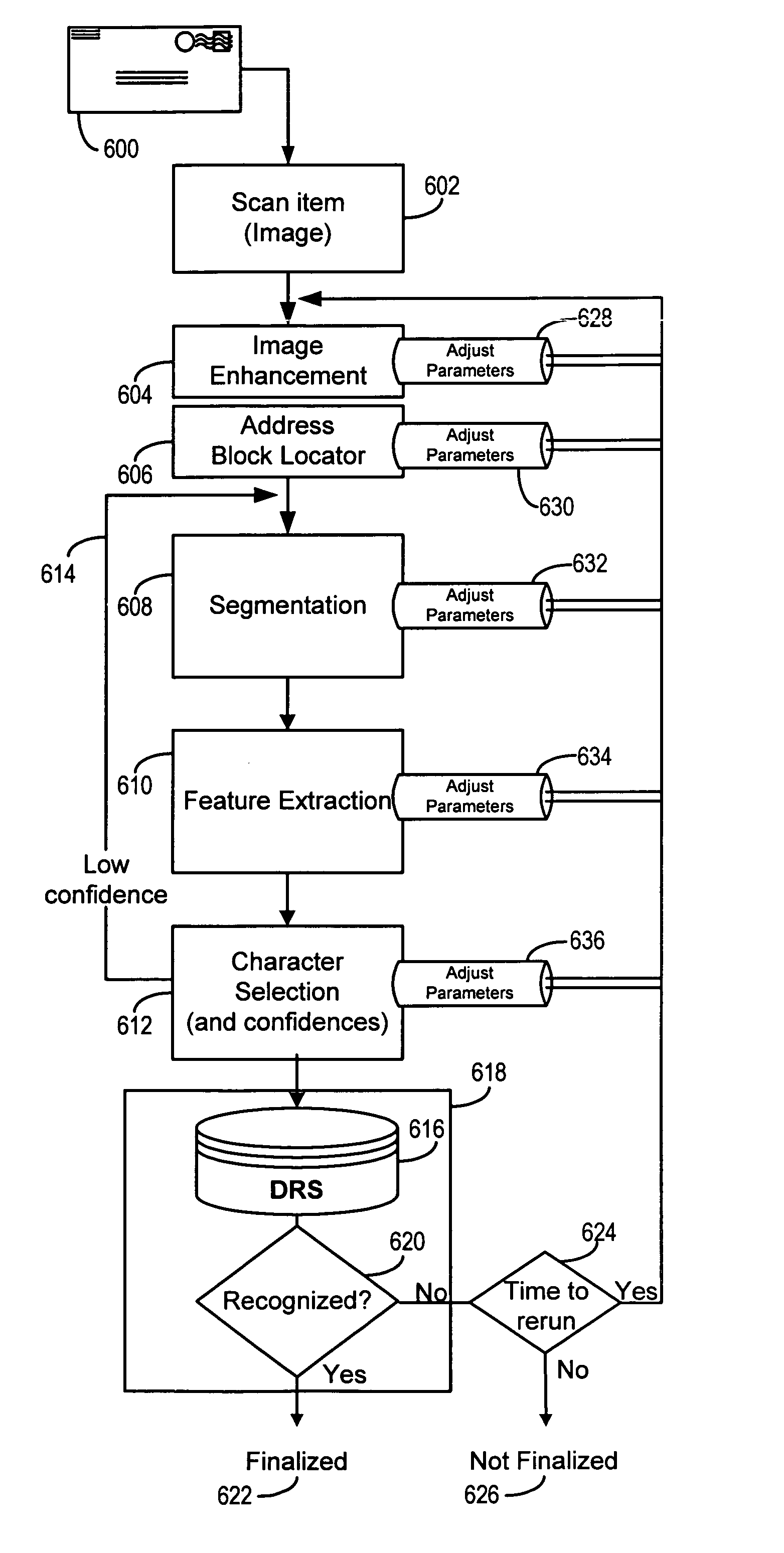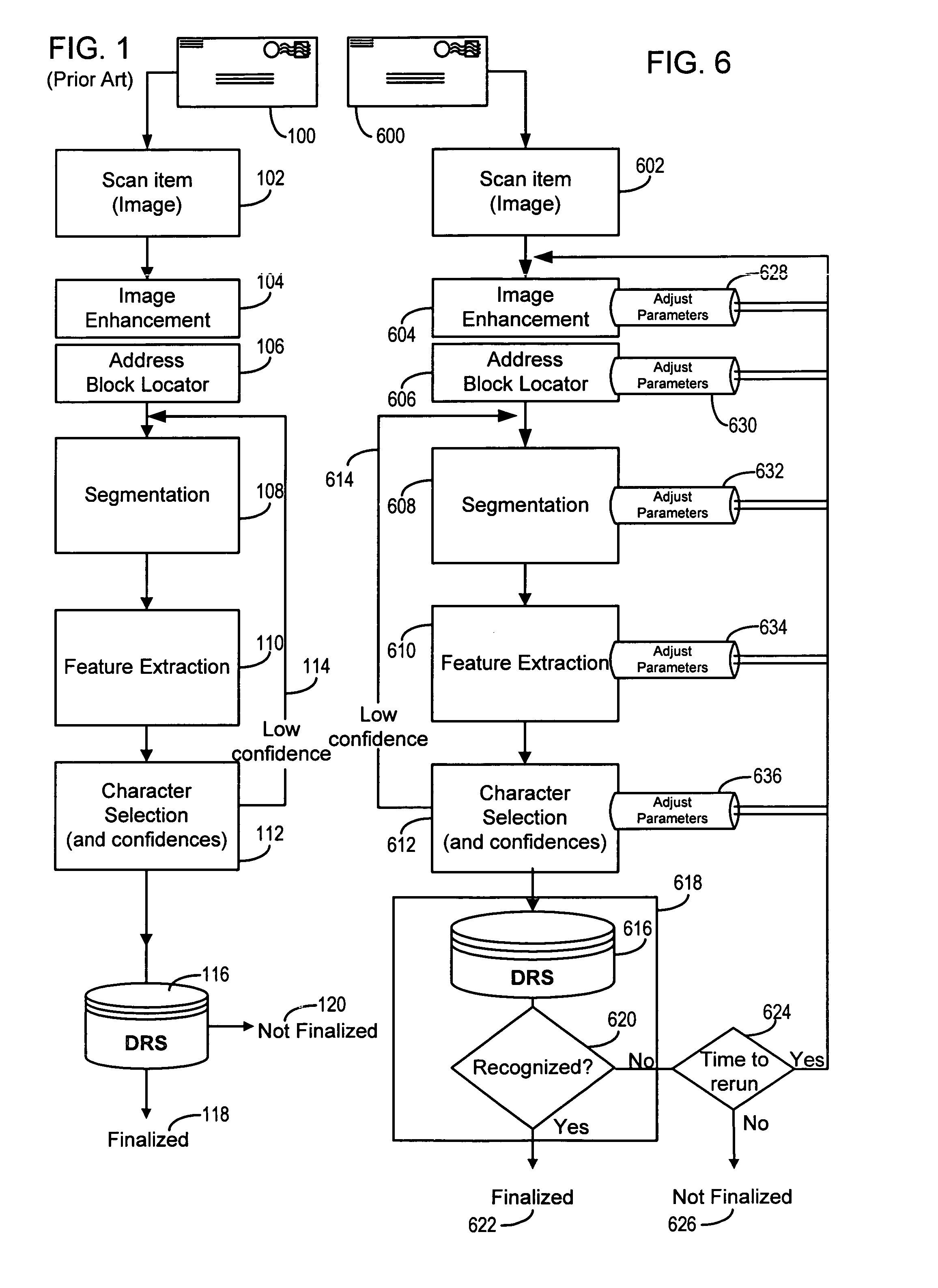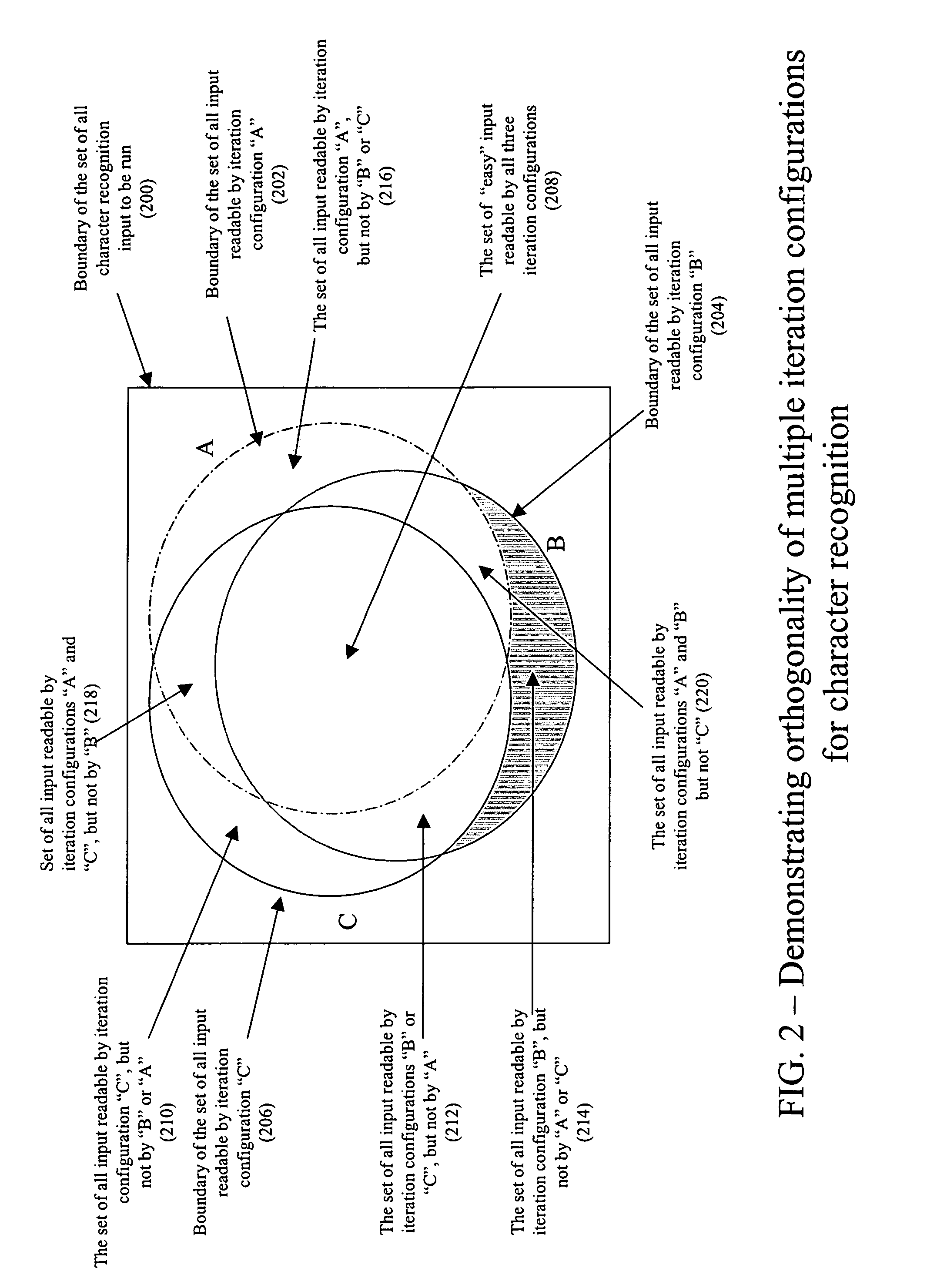Orthogonal technology for character recognition
a character recognition and orthogonal technology, applied in the field of automatic character recognition processing, can solve the problems of poor quality or lack of clarity in the original input piece, errors in the recognition process, and inability to substitute, join or separate characters reported in the result string
- Summary
- Abstract
- Description
- Claims
- Application Information
AI Technical Summary
Benefits of technology
Problems solved by technology
Method used
Image
Examples
Embodiment Construction
[0022]The present invention relates to the use of a self-orthogonal character recognition engine performing an iterative method for increasing the accuracy of character recognition results. While the present invention can be embodied in numerous contexts, a preferred embodiment described herein is implemented in the context of an optical character recognition system for use with mail pieces. Those skilled in the art may readily ascertain that other recognition technologies, such as magnetic character recognition, as well as a plurality of other contexts for use, may also be adapted consistent with the present invention.
[0023]FIG. 1 represents an optical character recognition method consistent with the prior art. An input piece 100 is depicted as a standard mail envelope. The input piece 100 is then scanned 102 or undergoes a similar digital capture method. The scanned image is 102 undergoes image enhancement 104, and the address block of the input piece 100 is then located 106 on th...
PUM
 Login to View More
Login to View More Abstract
Description
Claims
Application Information
 Login to View More
Login to View More - R&D
- Intellectual Property
- Life Sciences
- Materials
- Tech Scout
- Unparalleled Data Quality
- Higher Quality Content
- 60% Fewer Hallucinations
Browse by: Latest US Patents, China's latest patents, Technical Efficacy Thesaurus, Application Domain, Technology Topic, Popular Technical Reports.
© 2025 PatSnap. All rights reserved.Legal|Privacy policy|Modern Slavery Act Transparency Statement|Sitemap|About US| Contact US: help@patsnap.com



